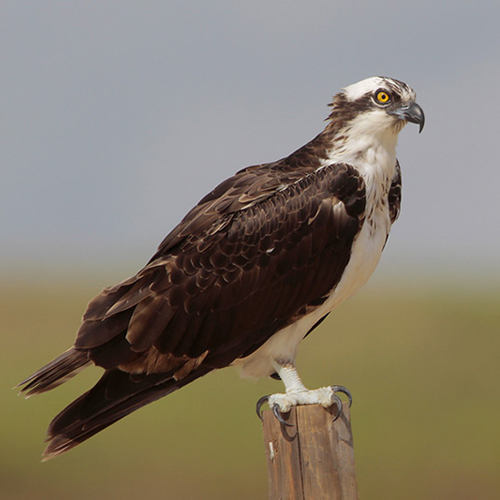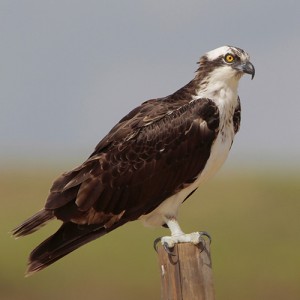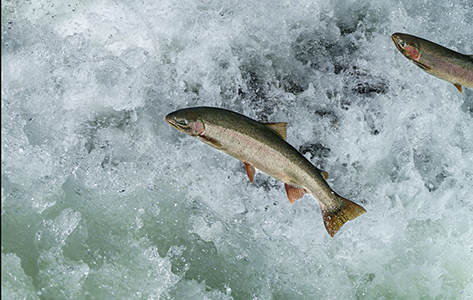— by Lin McNulty —
Where do Seahawks go after the Super Bowl? Win or lose, at least a dozen (12th MAN!) nesting pairs, says local birder Barb Jenson, will migrate to the San Juan Islands. More commonly known as Osprey, the popular name this week, of course, is Seahawk.
The Seattle Audubon Society says, “Ospreys are common near large bodies of water at lower elevations throughout Washington. They generally return to Washington in late March or early April; most of the population leaves in August or September.
“The Osprey is a unique bird that is unmistakable when seen at close range. It is the only species in its family, and it is found worldwide. Its breast and belly are mostly white, with some dark streaks. The white extends out the wings, but the primaries, secondaries, and tail feathers are mottled black-and-white. The back is mostly black or dark brown.
“The head is distinctive with a white crest, a face bisected by a dark eye-stripe, and yellow eyes. While there is much variation, the female tends to have a streakier breast than the male. The Osprey’s talons are uniquely adapted for catching and carrying fish: their surfaces are rough, and their toes can be held with three forward and one back, or with two forward and two back, an arrangement seen in owls but not in other diurnal raptors.
“In flight, they are most often confused with gulls because of their long wings, which are bent at the wrist. However Ospreys have a bounce to their flight that gulls lack.”
Recently, the population of Seahawks (fish eaters) in the San Juans has declined as they compete with Eagles (fish eaters, as well as carrion) for nesting sites and for food. The windstorms of 1989-90 took out a great number of trees. With Osprey nests that can weigh up to 1/2 ton, trees were quickly snapped off.
Every once in awhile, adds Jenson, “we will see an Osprey during our Christmas bird count.” But if the water is frozen, they cannot survive. During those months, the birds generally head to California, Arizona, or other southern states where they fledge before hurricane season.
Win or lose, local birders, and some football fans, look forward to the return of our summer Seahawk residents.
**If you are reading theOrcasonian for free, thank your fellow islanders. If you would like to support theOrcasonian CLICK HERE to set your modestly-priced, voluntary subscription. Otherwise, no worries; we’re happy to share with you.**










Thanks, Lin for bringing us back to what is truly important in our lives…the natural environment, and our care of it.